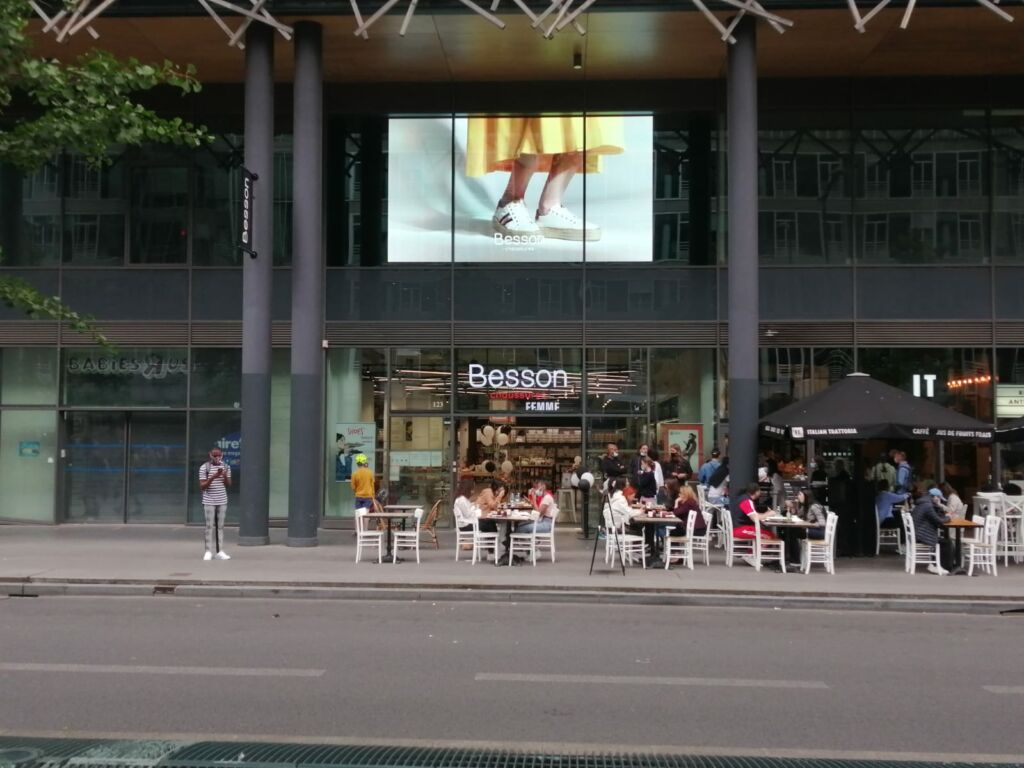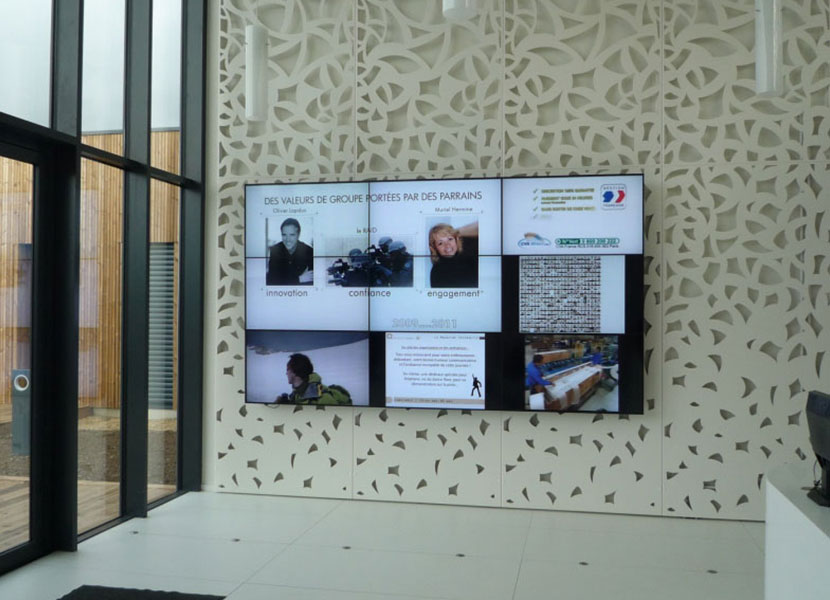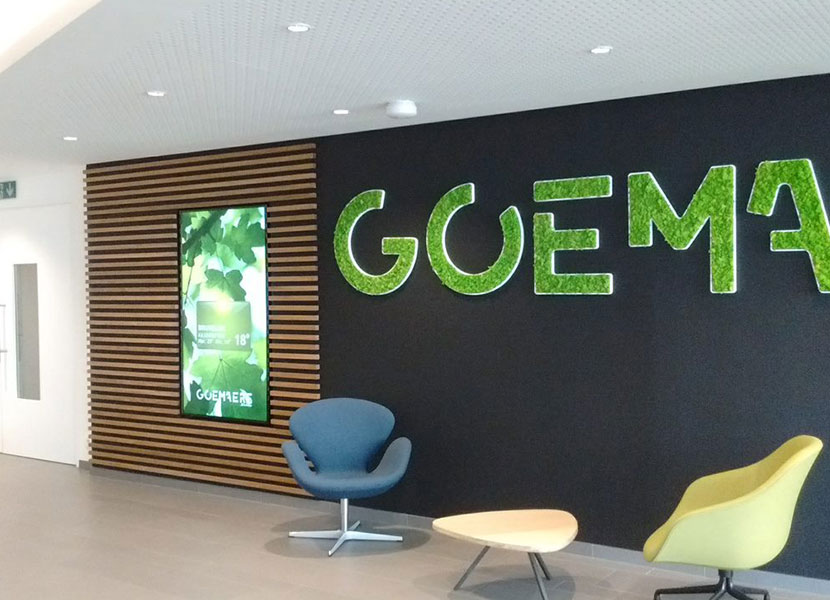Dynamic displays and traditional displays: what are the differences?

Today, billboards are widely used in urban spaces to capture the attention of the public: in the underground, at bus stops, in station or airport concourses, in shop windows, etc. They are one of the major communication tools used by companies to get their messages across, but their possibilities have been transformed by the development of digital technologies.
Dynamic displays have made it possible to broadcast animated or video content remotely and in real time. But the type of content is not the only difference between dynamic screens and traditional display media. They also have different impacts on audiences and do not involve the same message production and delivery processes.
Discover the main differences between dynamic screens and traditional display screens in this article!
Differences in access: a regulatory framework influenced by environmental objectives
Traditional and dynamic displays are subject to different regulatory frameworks which influence their access conditions. Paper displays, for example, are less subject to regulation because of their ephemeral nature. But people’s concerns about protecting the environment are also changing the laws, by transforming the conditions of access to certain media.
Traditional and dynamic billboards do not have the same arguments when it comes to environmental issues.
Promoting waste recycling
Traditional billposting is often criticised for its waste production. A billboard campaign requires a large quantity of paper and consumes a lot of printing ink. What’s more, if we also take into account the CO2 emissions linked to transport, the volume of CO2 produced by traditional billposting is close to 200kg/year for an 8 m² billboard.
And if the pollution linked to the lighting of these displays were added to the equation, the ecological balance of paper-based displays would be even worse. That said, companies are making efforts to reduce the amount of ink used and to encourage the recycling and re-use of paper.
Reducing light pollution
Digital signage is often criticised for its energy consumption and light pollution. The scarcity of resources is a major concern for people, and light pollution is not without incidence, as it could have an impact on biodiversity and disturb people’s biological rhythms.
However, technological innovations have made it possible to reduce these effects. LED technology, for example, considerably reduces the impact of dynamic displays. It is renowned for its low energy consumption (compared with LCD screens, for example) and it has a long lifespan: under normal conditions, 100,000 hours of broadcasting, or more than 10 years of continuous display.
Differences in the appeal and personalisation of messages
Dynamic displays and traditional displays have varying effects on audiences. The animated or frozen nature of the contents gives them different properties and advantages in the dissemination of messages.
The static images of traditional displays only serve to deliver unique messages. On top of that, they are dependent on light sources. They therefore have a double disadvantage with respect to communication objectives: the volume of information disseminated is limited so as not to alter the clarity of the message, and their visibility is relatively dependent on the environment.
In addition, this static form implies an important graphic reflection so that the message is synthetic, while respecting the printing and production constraints inherent in paper supports.
That said, traditional displays can paradoxically give way to great creativity when their frames are reinvented. Street marketing operations, for example, can be very attractive, with messages fully integrated into the audience environment. This type of unique communication, although exhibited in a single place, can greatly benefit from significant visibility thanks to social networks, provided that it is sufficiently original to encourage sharing on the web.
Traditional displays can therefore capture the attention of the public, but this success depends largely on the creativity of the graphic design. They need a “wow effect”. While dynamic displays more easily and naturally nurture that attention, as the animated nature of the message catches the human eye. To put it another way: we tend to watch what moves! What makes dynamic displays attractive.
Largest target hit
Digital displays also have another strength related to digital: the same screen can display more content, and this content can be animated. Video content thus has the advantage of going further into the potential complexity of the messages broadcast, which also increases audience engagement and strengthens the brand image.
Finally, it is possible, thanks to dynamic displays, to increase the precision of the targeting of advertising messages. The contents are programmable according to the time of day, the time of year, and can be determined according to the type of people who pass in front of the display.
Differences with the
test and learn : a question of adaptability and responsiveness
THE BIGGEST DIFFERENCE BETWEEN DYNAMIC AND TRADITIONAL DISPLAYS IS IN THE TIME TO PRODUCTION OF CONTENT REQUIRED
If a company already has a fleet of screens, new messages can be easily produced and distributed instantly to the entire fleet. While for traditional displays, several weeks are necessary for the production of the content -depending on the complexity of the model- and for its delivery.
THIS IS WHY DYNAMIC DISPLAYS OFFER GREATER ADAPTABILITY IN BRAND COMMUNICATION
Digital makes it possible to modify content at any time, i.e. to reorganize a calendar of communication actions when necessary. In addition, digital tools often offer a data capture and analysis system, thanks to which companies can more easily assess the effectiveness of their communication campaigns.
What about piloting on a ROI model?
Dynamic displays are thus particularly suitable for ROI approaches, because they allow better measurement of the performance of communication campaigns.
Any question relating to investment refers to that of the barrier to entry from a financial point of view. Here, traditional displays have the advantage of being more affordable as the cost of entry is reduced. But considering their very limited impact over time, and the repetition of messages necessary to ensure that they are well remembered by the public, traditional displays can very quickly require substantial budgets.
Dynamic displays are therefore a larger investment at the start, but lead to better profitability over time. The purchase of equipment is compensated over time by the savings made on the production of content and on the volume of display.
In addition, the better targeting of dynamic displays (through the personalization of content) ensures better performance of communications, which increases the return on investment.

It is not on the attractiveness of their content that dynamic displays and traditional displays differ the most. They both have advantages and disadvantages, and are probably more complementary than antagonistic. The biggest differences come from the properties of digital, thanks to which dynamic displays have more convincing arguments for any company seeking to maximize (1) its responsiveness from an organizational point of view, and (2) its efficiency in personalization. and dissemination of its messages.
Discover our digital signage solution >
In the same
categorie

10 tips for choosing, installing and using your digital signage system

Dynamic screen – the ally of your marketing strategy
